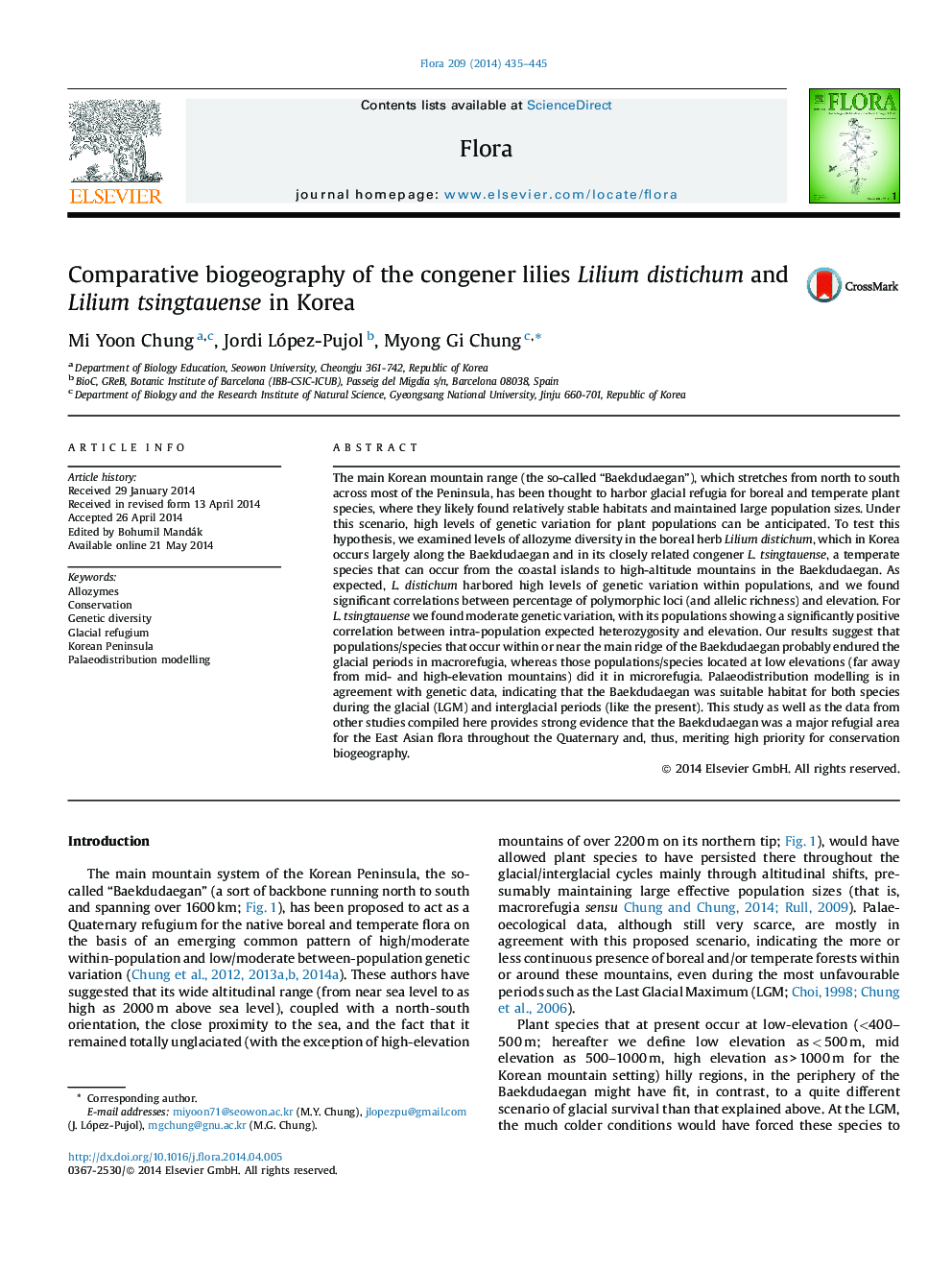| کد مقاله | کد نشریه | سال انتشار | مقاله انگلیسی | نسخه تمام متن |
|---|---|---|---|---|
| 2179566 | 1095061 | 2014 | 11 صفحه PDF | دانلود رایگان |

• Genetic diversity of plant populations indicate macro- or microrefugia during glaciation.
• Liliumcernuum and L.tsingtauense harbored high and moderate levels of genetic variation within populations, respectively.
• Genetic differentiation among populations was low for both species.
• Palaeodistribution modelling is in agreement with genetic data.
• Our results support the proposed role of Baekdudaegan (the main Korean mountain range) as a glacial refugium.
The main Korean mountain range (the so-called “Baekdudaegan”), which stretches from north to south across most of the Peninsula, has been thought to harbor glacial refugia for boreal and temperate plant species, where they likely found relatively stable habitats and maintained large population sizes. Under this scenario, high levels of genetic variation for plant populations can be anticipated. To test this hypothesis, we examined levels of allozyme diversity in the boreal herb Lilium distichum, which in Korea occurs largely along the Baekdudaegan and in its closely related congener L. tsingtauense, a temperate species that can occur from the coastal islands to high-altitude mountains in the Baekdudaegan. As expected, L. distichum harbored high levels of genetic variation within populations, and we found significant correlations between percentage of polymorphic loci (and allelic richness) and elevation. For L. tsingtauense we found moderate genetic variation, with its populations showing a significantly positive correlation between intra-population expected heterozygosity and elevation. Our results suggest that populations/species that occur within or near the main ridge of the Baekdudaegan probably endured the glacial periods in macrorefugia, whereas those populations/species located at low elevations (far away from mid- and high-elevation mountains) did it in microrefugia. Palaeodistribution modelling is in agreement with genetic data, indicating that the Baekdudaegan was suitable habitat for both species during the glacial (LGM) and interglacial periods (like the present). This study as well as the data from other studies compiled here provides strong evidence that the Baekdudaegan was a major refugial area for the East Asian flora throughout the Quaternary and, thus, meriting high priority for conservation biogeography.
Journal: Flora - Morphology, Distribution, Functional Ecology of Plants - Volume 209, Issue 8, August 2014, Pages 435–445